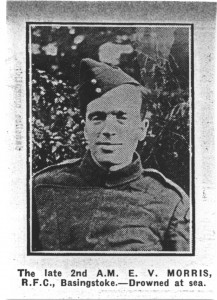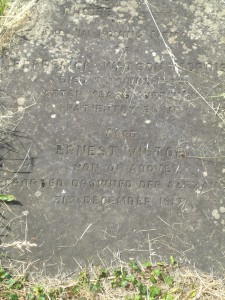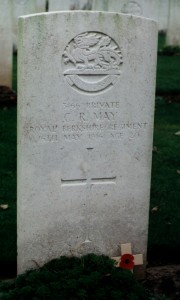Ernest Victor Morris
Air Mechanic 2nd Class B/40997
56th Kite Balloon Section, Royal Flying Corps.
Division 18
 |
 |
Ernest Victor Morris was the son of Frederick Watson Morris and Louisa Morris, of 27, Castle Street, Reading. The 1911 census Louisa Morris ran a Cornmerchants from the home address with Ernest and his sister Hilda working in the business. Ernest’s father was an overseer at the Post office as did sister Ethel who was a telephonist. He was the husband of Dorothy Mary Harris (formerly Morris), of 59, Blenheim Road, Caversham, Oxfordshire. Born about 1891 Ernest Victor was aged 27 when he was lost at sea on the 31st December 1917 . He is commemorated on his parents grave and also the Chatby memorial, Egypt.
From 1914 to 1919, transports and Hospital Ships traversed the seas to and from Alexandria, bringing reinforcements for Egypt, Gallipoli or Palestine and carrying the sick and wounded out of the theatres of war. Hundreds of men died on the high seas from sickness, wounds or accident and received the same burial as a sailor who dies at sea. Their graves are the sea itself and the Chatby Memorial records their names.
On the 30th December 1917, the hired transport ship “Aragon” was torpedoed whilst entering the harbour at Alexandria. The Master, eighteen crew and 380 soldiers bodies were not recovered. The following day the hired transport “Osmanieh” struck a mine in the same place and sank together with 76 men who sailed in her. It is not yet known in which of the two ships Ernest Victor Morris sailed.


